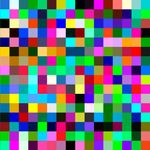 Adobe Community
Adobe Community
Mystery colour problem
Copy link to clipboard
Copied
Hi
I'm having a real issue with the colours on my Photoshop and I can't work out the problem.
When I have photoshop open on one monitor it is different to the other but it's nothing to do with the colour settings of the monitor because if I click to drag the file to the other monitor the colours change. Almost like photoshop has an issue with colour only within a working file on one monitor.
The image attached shows 2 screen shots sitting side by side, the right side is the colour when I click the working box to move it to another screen and the one on the left is just the file sitting in photoshop in a workable state. The videos show the colour changing on moving and how the colour picker doesn not tally with the screen.
It's pretty much unuseable in terms of colour calibration so please can someone help.
Thanks
Adam
Explore related tutorials & articles
Copy link to clipboard
Copied
Photoshop is colour managed. That means it uses the colour profile for your monitor which is set in the windows operating system to translate the color values in the document to the values needed by the screen to display the document correctly. That happens in the background without you doing anything.
When you drag a window onto a second monitor screen you may see a point at which the profile being used switches from the first monitor to the second.
To display colours accurately it is essential that each monitor has a profile that describes its behaviour with its current settings. This is normally made with a calibration tool such as the i1Display or similar. The profile for monitor A will be different to the profile for monitor B so each monitor should be separately profiled. Photoshop will then use the appropriate profile for the display being used.
If you have calibrated and profiled your monitors the only difference you still might see is where one monitor has a wider gamut than the other (in other words it can display a wider range of colours). In that circumstance a particular colour might change simply because it cannot be displayed on one of the monitors but can be displayed on the other.
So start with your monitor profiles. Have you made a profile for each, in their current state of adjustment? Changing a monitor adjustment invalidates the profile so a new profile must be made.
Dave
Copy link to clipboard
Copied
Thanks for your response. I've looked up what a profile installing or
working with new ones is not very easy but I found tool on windows called
calibrate display colour which did the trick.
thanks again for your help
Copy link to clipboard
Copied
The step you've taken does show that the problem was the profile not matching your monitor. Whilst visual 'calibration' tools go so far, they do not properly calibrate, nor do they produce an associated monitor profile that describes each monitor in its calibrated state. It is that profile that is used by colour managed software.
I would highly recomend that you invest in a hardware calibration tool such as the previously mentioned i1Display or similar. The software that comes with such a device will both calibrate each monitor and produce and install an associated colour profile. When adjusting images, you only have your monitors to trust, and incorrectly profiled monitors mean that you make visual adjustments that compensate for the monitor, rather than correcting the image. They really are worth having.
Dave
Copy link to clipboard
Copied
Indeed. If you require accurate color, a calibrator is a given. It's just something you need to have.
Calibrating and profiling a monitor is not something you do once and never again. Not only do monitors drift, but you may need to change the parameters from time to time for a number of reasons.
It's also quick color troubleshooting. If Photoshop doesn't display correctly, the reason is nearly always an incorrect/defective monitor profile. Making a new profile is always the first thing to do.
Copy link to clipboard
Copied
No mystery.
Photoshop uses the monitor profile it gets from the operating system for each screen. When you drag, the profile is switched at the instant you drop anywhere over the mid-line.
If colors are wrong, your monitor profiles are no good, or one is good and the other wrong.
To get them both correct and matching, you need to use a calibrator to make a monitor profile for each screen. To get a good match, both screens should also be calibrated to a visually matching white point.
The monitor profile is a standard icc profile just like e.g. sRGB or Adobe RGB, only custom made by measuring the screen with a colorimeter. Photoshop will then convert, on the fly, as you work, from the document profile and into the monitor profile, and those numbers are sent to screen.
(EDIT cross-post)
Copy link to clipboard
Copied
I've moved this thread from bugs to discussions as it is not a bug.
Dave
Copy link to clipboard
Copied
@adambarnes2011 as others have written, for accurate colour across your system you must have properly calibrated & profiled displays. I also agree with Dave that a visual calibration tool is quite a flawed way of achieving this. Because the result is very unlikely to be correct.
To check calibrated & profiled appearance I use this:
Have you ever wondered how to KNOW whether your screen [or printer] is ACCURATE and not just 'pleasing'?
If so please check this out: http://www.colourmanagement.net/products/icc-profile-verification-kit
I hope this helps
neil barstow, colourmanagement net - adobe forum volunteer - co-author: 'getting colour right'
google me "neil barstow colourmanagement" for lots of free articles on colour management
